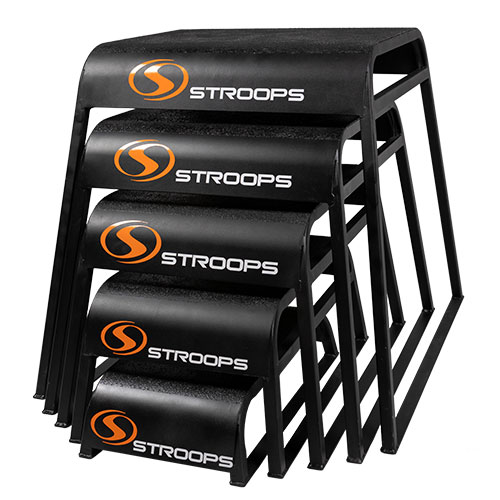Athletes love plyometric exercise for a number of reasons. You’ve probably seen videos of people showing off incredible box jumps using different kinds of boxes that the fitness industry refers to as a plyo box. Studies show that incorporating plyometric exercises into your fitness routine can enhance your power, explosiveness, and overall athletic performance. However, choosing a plyo box can come with some complexity.
A key component of any plyometric training is a reliable plyo box. There are a plethora of options available on the market, and these boxes can look and function in numerous ways. To help you figure out the plyo box for your needs, here are three things to look for when choosing a plyo box:
Sturdiness and Durability
When selecting a plyo box, durability is paramount. Plyometric exercises involve repetitive jumping and landing, which will place considerable stress on the box. If you don’t have a well-built one with good materials, you may wind up back to square one shopping for yet another plyo box very soon, throwing tons of money away.
You may frequently see plyo boxes made with a thick foam or other soft exterior on the top. This design is often to improve the safety of the machine so that you’re not at risk if you fall short on a jump or other exercise.

Repeated use of this box design, however, will quickly deteriorate its surface, causing tears and abrasions and taking chunks out of the foam. Not only will you be left with an unsafe surface, you’ll also be left with an unsightly one.
Foam plyo boxes are also a safety hazard due to the lack of sturdiness. Landing on an unstable surface during plyometrics can cause you to lose your balance and fall.
When choosing a plyo box, look for one made from high-quality materials such as sturdy wood or steel, which can withstand the rigors of intense workouts without wobbling or breaking. Additionally, consider the weight capacity of the box to ensure it can accommodate users of different sizes.

Height Preference
Plyometric training encompasses a wide range of exercises that may require varying box heights. Opting for an adjustable plyo box or a set of boxes allows you to customize the workout intensity and progress as your fitness level improves.
There are two ways in which the height of a plyo box on the market can be adjustable. You may be able to purchase a stackable box with separate parts that can form a taller machine. This design often lends itself to the potential for a higher surface, but its applicability is low. Plyometric exercise is about far more than just gravity-defying box jumps. You want to invest in being able to put together a full workout.
The other, better option is to invest in a set of boxes that have differing heights. By doing so, you have a product that satisfies the needs of your entire plyometric workout, not just a few exercises. Box sets like the Ergo Plyo Boxes help you further diversify your workout and get more out of it.
When choosing a plyo box, look for one that offers multiple height options, typically ranging from 12 to 24 inches or more.
Safety Features
Safety should always be a top priority when choosing exercise equipment. Plyometric exercises involve powerful movements that can lead to accidents or injuries if performed incorrectly or with inadequate equipment.
Look for a plyo box with features that enhance user safety, such as non-slip surfaces or rubberized edges that provide grip and stability during jumps and landings. Additionally, some boxes may have rounded corners or padded surfaces to minimize the risk of accidental bumps or bruises.

One of the most variable safety factors with any plyo box, of course, is you. Practice mindful exercise when doing plyometrics, making sure your space is clear and that you aren’t trying to overdo a movement in repetitions or the amount of power needed.
Wrap It Up
Choosing a plyo box that’s right for you is crucial for maximizing the effectiveness and safety of your plyometric training. Prioritize sturdiness and durability to ensure your box can withstand the demands of intense workouts. Look for adjustable heights to accommodate different exercise variations and progressions. Lastly, opt for safety features such as non-slip surfaces and rounded edges to minimize the risk of accidents or injuries.
By considering these three key factors, you can make an informed decision and choose a plyo box that meets your fitness needs and supports your athletic goals. Remember, investing in quality equipment is investing in your long-term fitness journey.

0 Comments